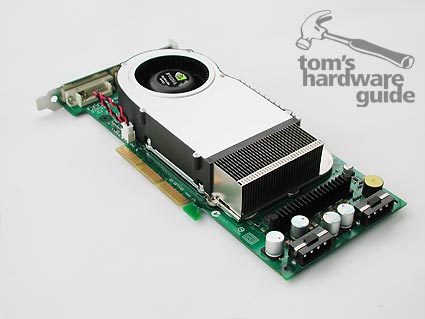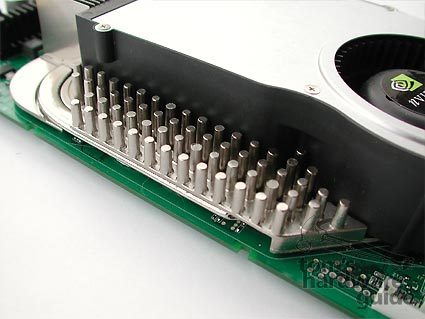Performance Leap: NVIDIA GeForce 6800 Ultra
The Hardware, Continued
Natively, the NV40 is an AGP chip, but it is already designed to be used with NVIDIA's HSI PCI Express bridge. This bridge will allow data rates of up to AGP 16x (4,2 GB/s) between the GPU and the bridge which, NVIDIA hopes, will counterbalance the bandwidth disadvantage compared to a native PCI Express solution. More information on what HSI Bridge means here . It seems NVIDIA also learned a lesson from the NV30 launch, when it took a big risk by implementing several new and partly unproven technologies at the same time, among them DDR2 memory and a 130 nanometer production process. This time, NVIDIA has chosen to play it safe, and so the NV40 will use the tried and true AGP interface. The remaining members of the NV4x family will all be native PCI Express chips, meaning their AGP variants will all use the HSI bridge chip as well, translating from PCI Express to AGP this time.
The GeForce 6800 Ultra runs at a core clockspeed of 400 MHz, with a memory frequency of 550 MHz (1.1 GHz DDR). This makes the GF 6800 Ultra the second NVIDIA card to utilize GDDR3 memory, following in the footsteps of the FX 5700 Ultra which we covered here. As a result, the GeForce 6800 offers a stunning memory bandwidth of 35.2 GB/s. The Samsung memory modules on our review card were even specified up to 600 MHz, which means there should still be some headroom for tweaking. Also, since Samsung currently doesn't offer 550 MHz modules, there's a good chance that all final retail cards will also come with 600 MHz memory.
The GDDR3 memory modules are specified for speeds up to 600 MHz. This leaves some headroom for overclocking experiments.
A heatpipe conducts the heat from the front memory chips to the large heatsink.
Get Tom's Hardware's best news and in-depth reviews, straight to your inbox.


